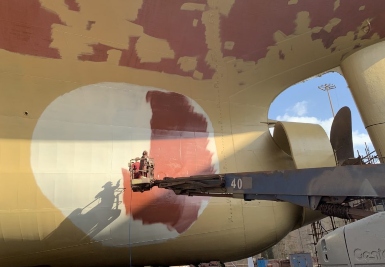
Corrosion has emerged as the arch-enemy of the exhaust gas cleaning systems as the uptake of the technology rose with the entrance into force of the IMO 2020 sulphur cap.
Like with any new technology, scrubber maintenance and operation has been a learning curve for ship owners and operators, especially in the context of preventing failures of the technology and reducing downtime.
“Corrosion mainly happens on the overboard pipes, the last piece from GRE piping and connection to shell plating of the hull, especially near the connections and welding seams, and the area on the external hull around the overboard pipe outlet,” said Manuel Hof, Sales & Production Executive, NACE Coating Inspector Level 2 at Subsea Industries.
“These areas will need to be protected against acid-containing water (highly corrosive sulphuric acid) coming from the exhaust gas cleaning system. Continue reading “Scrubbers Coatings as important as quality material of scrubber components to prevent corrosion”










